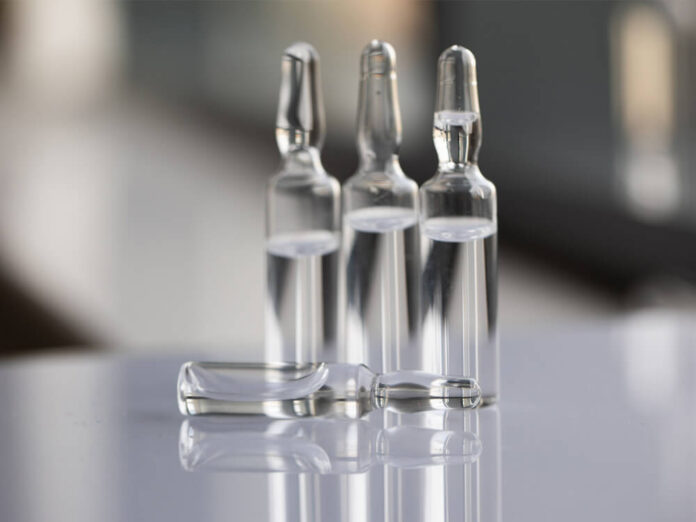Why Ampoules Matter in Pharmaceuticals
Ampoules play a key role in the pharmaceutical industry, fulfilling a range of functions. Firstly, they allow for precise dosing of medicines. Each ampoule contains a single dose of a medicine, minimizing waste and ensuring dosage accuracy, a vital aspect especially when dealing with potent drugs where the difference in a small amount could have significant implications.
Ampoules are also vital for protecting sensitive medications. Certain pharmaceutical substances degrade upon exposure to environmental elements like oxygen, moisture, or bacteria. The sealed nature of ampoules safeguards these substances, maintaining their effectiveness and extending their shelf life. This makes ampoules integral to ensuring that patients receive a medication that is both safe and effective.
What is an Ampoule?
An ampoule is a meticulously designed small, sealed vial typically made of glass or plastic. The sealing process involves melting the thin top open end of the ampoule, creating an enclosed environment impervious to external factors. This is essential for medicines requiring high degrees of protection.
Ampoules are a marvel of design and engineering. The choice of materials, the specific shape, and the sealing process are all carefully calibrated to provide optimal protection for the substance inside. This intricate level of detail explains why ampoules are trusted with some of the most critical medications in the pharmaceutical industry, including vaccines and biotech drugs.
Why Bother with Leak Testing?
Leak testing, a vital part of a leak test procedure in pharmaceuticals, is essentially the quality and safety gatekeeper in this industry. Consider the analogy of a fortress with a tiny, unnoticed crack in its wall. Over time, external elements could seep through this crack, compromising the fortress’s integrity. Similarly, even the tiniest leak in an ampoule can compromise the sterility and purity of the medication it contains.
The implications of leak testing go beyond just ensuring the quality of the medication. It directly impacts patient safety. Contaminated or degraded medications can lead to ineffective treatment or, in worst-case scenarios, harm the patient. Hence, leak testing is a critical control point in pharmaceutical manufacturing, ensuring every ampoule that reaches the market is worthy of the trust placed in their medications by patients.
Leak testing is also a kind of insurance for pharmaceutical companies. Product recalls due to contamination can be expensive, not just financially but also in terms of reputation. A rigorous leak test procedure in pharmaceuticals can identify faulty ampoules before they leave the manufacturing facility, saving companies from potential lawsuits and the associated loss of trust among healthcare providers and patients. In this sense, leak testing becomes a non-negotiable part of quality assurance in pharmaceutical manufacturing.
The ABCs of Leak Testing
Let’s go through the steps to implementing a leak test for ampoules:
Recognize the Value of Leak Testing: This is the first and most vital step. Understand that leak testing is not just about quality control, it’s also about patient safety and the reputation of your pharmaceutical company.
Get the Right Equipment: Next up, you need an ampoule leak tester. Make sure to pick a tester that best suits your needs, and consider things like sensitivity, efficiency, ease of use, and reliability.
Learn the Ropes: Before you start, familiarize yourself with how the tester works. It usually uses the differential pressure method to detect leaks. Be aware of its limitations and ensure you’re using other quality control measures as well.
Kick Off the Testing Process: Now, you’re ready to start testing. Make sure to clean the ampoules, arrange them efficiently in the tester, and calibrate the tester for accurate results.
Understand the Results: The tester will point out any ampoules with leaks, which should then be discarded. High rates of leaks could indicate a problem with the sealing process that needs to be fixed.
Make Necessary Changes: If you come across any leaks, it’s time for some action. This could involve tweaking the sealing process, adjusting the manufacturing parameters, or even replacing faulty equipment.
Enhancing Ampoule Integrity through Leak Test Procedure in Pharmaceuticals
A leak test procedure in pharmaceuticals is a crucial step in ensuring ampoule integrity. Companies like Seal-Check offer innovative leak detectors to ensure product quality and safety. These detectors help identify even minuscule leaks that might compromise the product.
Effective use of these tools and accurate interpretation of results form part of this crucial procedure. A well-trained team familiar with the operation of such equipment is an asset. Upon detecting a leak, immediate and appropriate measures must be taken. These could range from a review of the sealing process, a tweak in manufacturing parameters, or equipment replacement.
In essence, the leak test procedure is more than detection and fixing leaks—it involves preventive measures and continuous improvements. A rigorous approach to leak testing fortifies pharmaceutical product integrity and maintains user trust.
Read Also
- How to Drive Growth Through Customer Centricity in HealthcareThe world of healthcare is changing in big ways. Consumers are now stepping up and taking charge of their health journeys. This change is happening now for important reasons. The U.S. health and wellness market is huge, projected to be over $6 trillion in 2025. This growth is fueled by rising out-of-pocket costs and more… Read more: How to Drive Growth Through Customer Centricity in Healthcare
- Maximizing Digital Reach for Podiatry Clinics in Local HealthcareMaximizing Digital Reach for Podiatry Clinics in Local Healthcare As the healthcare industry evolves, mobile marketing becomes indispensable for practitioners. Podiatry clinics, focusing on foot and ankle care, must adapt to digital strategies to engage patients effectively. Implementing tailored SEO practices is crucial for these clinics to thrive in an increasingly competitive market. Digital marketing… Read more: Maximizing Digital Reach for Podiatry Clinics in Local Healthcare
- Leveraging Virtual Medical Assistants to Maximize Operational Efficiency in HealthcareIn the increasingly complex and fast-paced world of healthcare, operational efficiency is critical. Doctors and healthcare administrators are faced with numerous challenges, from managing patient scheduling and medical billing to adhering to stringent regulatory compliance and insurance claims processing. These tasks, while essential, often divert time and resources away from the core mission of providing… Read more: Leveraging Virtual Medical Assistants to Maximize Operational Efficiency in Healthcare
- Optimizing CT Protocols: The Hidden Key to Efficiency and Cost Savings in RadiologyIntroduction: Why CT Protocol Optimization Matters Computed Tomography (CT) is a cornerstone of modern diagnostic imaging, providing critical information across nearly every medical specialty. However, maximizing the value of CT — both clinically and financially — requires more than just advanced hardware. The real secret lies in the optimization of CT protocols. When CT protocols… Read more: Optimizing CT Protocols: The Hidden Key to Efficiency and Cost Savings in Radiology
- Hospital Discharge Accuracy Improves With Daily Advisor InvolvementThe hospital discharge process has a big effect on patient recovery, hospital efficiency, and finances. It requires careful planning and clear communication between team members to make sure patients get the right care when they leave the hospital. Having physician advisors involved at this stage can improve the discharge process by spotting problems that need… Read more: Hospital Discharge Accuracy Improves With Daily Advisor Involvement
- Understanding Clinical Trials: What to Learn and the RoadblocksClinical trials are research studies conducted to determine the efficacy of medical, surgical or behavioral interventions. They are the most commonly used way that researchers assess whether new treatments, drugs or medical devices are safe and effective for use in humans. There are strict protocols governing these studies, and all of this is done in such a… Read more: Understanding Clinical Trials: What to Learn and the Roadblocks







